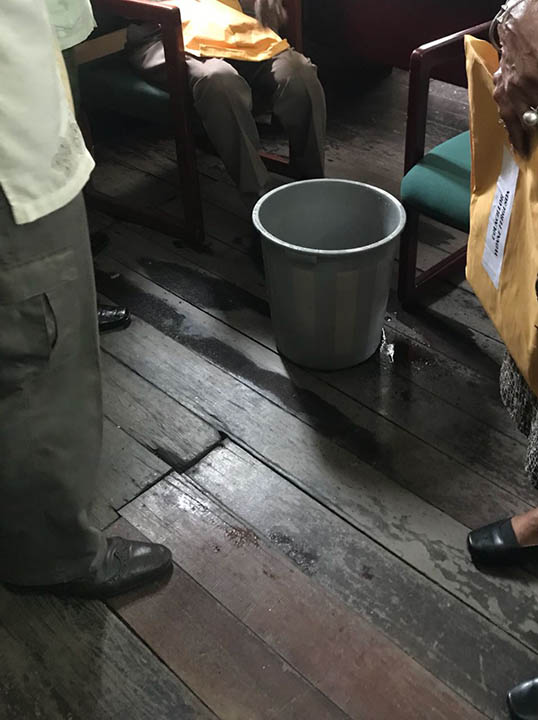The cost to restore the historic City Hall building has been pegged at US$4.3 million, Town Clerk Royston King yesterday informed city councillors during their fortnightly statutory meeting.
King quoted the price from the Comprehensive Restoration and Sustainable Conservation Management Plan, which was presented yesterday morning to his office and Minister of Social Cohesion with responsibility for the Department of Culture, Youth and Sport Dr George Norton and Minister of Communities Ronald Bulkan.
He, however, pointed out that a cost for the supervision of works during the implementation period was not attached to the restoration, thereby indicating that the project would cost more.
The plan, funded by the European Union (EU) at a cost of $64 million, was compiled by Euronet Consulting.
King related that he had received an electronic copy of the report and would have it circulated to councillors in time for a special meeting to discuss the way forward.
“We need now to move to the implementation of that plan and not just to have it on the shelves but look to moving to implement the plan,” he noted.
King yesterday informed the council that like in past reports and assessment in the past, the consultants have recommended that they evacuate the building and move forward with the implementation of the proposed plan.
He called for the council to begin lobbying for the funds as the building was deteriorating rapidly. During rainfall yesterday, Stabroek News observed several places inside the council chamber leaking. A bucket was placed under one of the leaks to collect water.
“We need to move as soon as possible to begin implementation of that plan. We are talking about this historic and iconic building that has huge significance in our heritage and we need to move ahead and leave something for our children in the next generation, a legacy of good and goodness and to preserve a sustainable part of our cultural heritage,” King argued.
“We are losing all of our iconic buildings because we are unable to care for them and maintain them. City Hall is a green building, and is in keeping with our agenda as a nation to go green. This building has the right amount of ventilation and natural lighting… it is a green building and a building that needs to be preserved,” he added.
Following King’s announcement, APNU+AFC Councillor Phillip Smith questioned if the building was safe to hold meetings and house offices of the administration.
“We are hearing again, this afternoon, from
another report that suggests we evacuate the building and it is not safe. My question is, sir: Should we be here now and this is a very serious situation? Do we continue to defy the advice given to us by experts and those in authority and continue having meetings here?” Smith asked.
Responding to his question and similar concerns from other councillors, Chief City Engineer Colvern Venture informed the council that he advised that they move within five months. Venture noted that while the building can be used with the next five months, they would need to conduct steady assessments of its deterioration.
“I would say we could operate until the end of this year but we will have to continue to monitor the deterioration on the third floor. We have further deterioration on the roof of this building and as such we will have to do an inspection… this floor and the ground [floor] can be occupied but there will be discomfort because of the leakages,” he said.
Venture also begged the council to set aside money to extend the building that houses the Mayor’s office to allow it to accommodate additional offices and chambers for statutory meetings.
“We would have to find a place to have the offices be relocated and also to hold meetings. We need to set aside the necessary funds for the admin building to be constructed rather than to rent, which is going to be costly,” the Engineer advised.
Late May, Stabroek News reported that 90 percent of the materials which were used to construct City Hall over 100 years ago can be reused during the restoration. The suggestion was made by one of the consultants, Ed Morton, who worked on the report.
During a workshop, Morton and Francis Maude, the Specialist Conservation Architect, had said that the building was “structurally sound” but 10 percent would need to be restored.
Both Morton and Maude had pointed out that water damage was one of the major factors for the current state of the building and its continuous decay.










